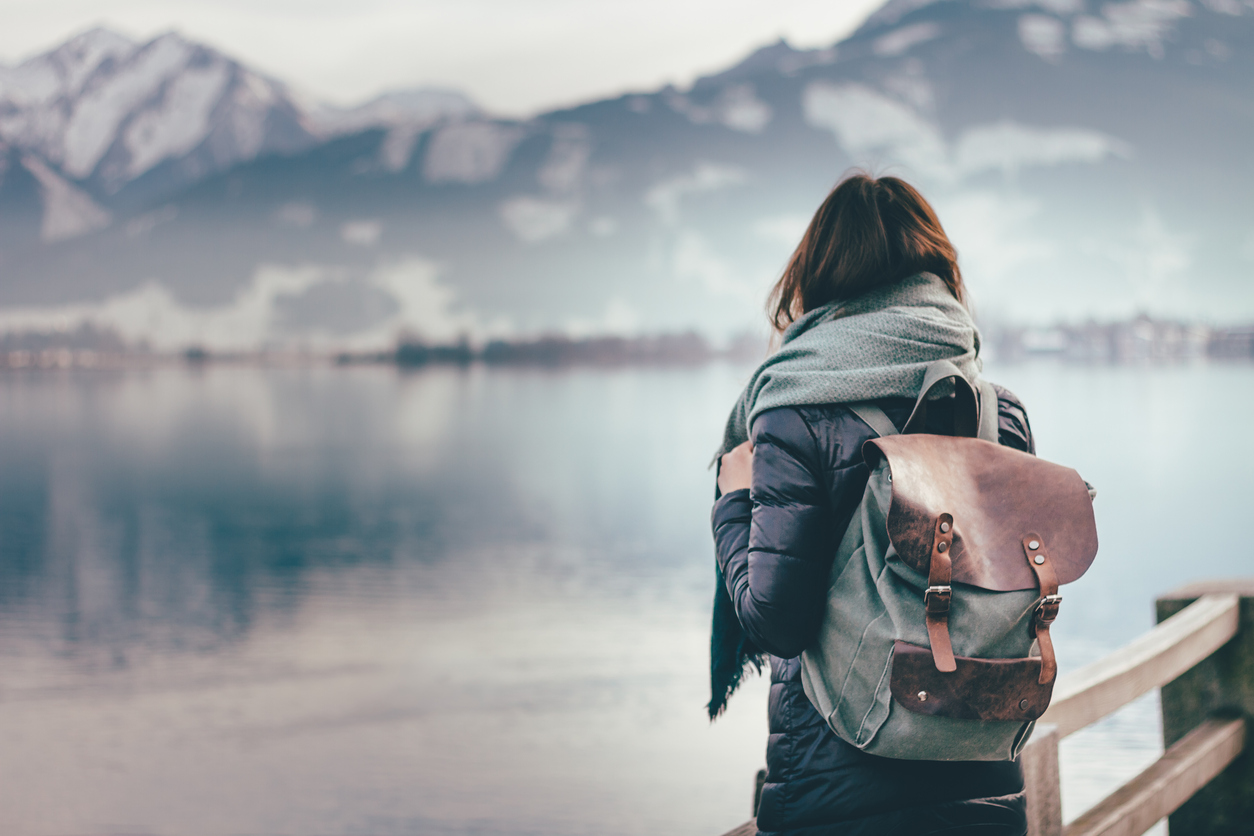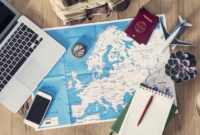Senior woman traveling alone: Embarking on a solo adventure later in life offers unparalleled freedom and self-discovery. However, careful planning and preparation are crucial to ensure a safe, enriching, and enjoyable experience. This guide addresses the unique considerations for senior women traveling independently, covering safety, health, logistics, and cultural immersion.
From navigating international travel arrangements to managing health concerns and budgeting effectively, we provide practical advice and resources to empower senior women to confidently explore the world on their own terms. We’ll delve into creating personalized itineraries, choosing appropriate accommodations, and utilizing technology to enhance their journey, all while emphasizing safety and well-being.
Health and Wellness Considerations
Solo travel for senior women presents unique opportunities for personal growth and exploration, but careful planning regarding health and wellness is paramount to ensure a safe and enjoyable experience. Prioritizing health allows for a more fulfilling trip, minimizing potential disruptions and maximizing the enjoyment of new experiences. This section outlines strategies for managing health concerns, packing appropriately, maintaining well-being, and creating a balanced travel schedule.
Managing Health Conditions While Traveling Alone
Effectively managing pre-existing health conditions while traveling alone requires proactive planning and preparation. This includes consulting your physician well in advance of your trip to discuss potential risks associated with your destination and travel activities. Obtain necessary prescriptions and ensure you have sufficient medication for the entire trip, plus extra in case of delays. Carry a comprehensive medical history document, including allergies, current medications, and emergency contact information, both in paper form and digitally stored. Familiarize yourself with the local healthcare system at your destination, including the location of nearby hospitals and pharmacies. Consider travel insurance that provides comprehensive medical coverage, including emergency evacuation. For chronic conditions, packing a small, well-organized medical kit containing essential supplies is crucial.
Packing List for Potential Health Needs
A well-prepared packing list can significantly alleviate health-related anxieties during solo travel. This list should include: prescription medications (with copies of prescriptions), over-the-counter pain relievers, anti-diarrheal medication, motion sickness remedies, antiseptic wipes, bandages, antibiotic ointment, any personal medical devices (e.g., inhaler, blood pressure monitor), a thermometer, and any necessary medical documentation. Consider including a small first-aid kit with basic supplies like pain relievers, antiseptic wipes, bandages, and blister treatment. Don’t forget to pack any necessary assistive devices like walking sticks or canes if needed. Remember to pack medications in their original containers and keep them in your carry-on luggage to avoid potential loss or damage.
Strategies for Maintaining Physical and Mental Well-being
Maintaining physical and mental well-being during extended travel is essential for a positive experience. Prioritize regular exercise, even if it’s just a daily walk or some simple stretching exercises in your hotel room. Staying hydrated is crucial, especially in warmer climates. Eat nutritious meals and snacks, even if it means seeking out healthier options at local markets or restaurants. Schedule regular breaks throughout the day to rest and recharge. Engage in activities that you enjoy and that promote relaxation, such as reading, journaling, or listening to music. Stay connected with loved ones back home through phone calls, emails, or video chats to maintain social connections and combat loneliness. Practice mindfulness techniques such as meditation or deep breathing exercises to manage stress and anxiety.
Sample Daily Schedule
A balanced daily schedule is key to managing both sightseeing and rest. A sample schedule could include: 8:00 AM – Wake up, light exercise, breakfast; 9:00 AM – 12:00 PM – Sightseeing or activity; 12:00 PM – 1:00 PM – Lunch; 1:00 PM – 3:00 PM – Sightseeing or activity; 3:00 PM – 4:00 PM – Rest/Relaxation (reading, journaling, nap); 4:00 PM – 6:00 PM – Sightseeing or activity; 6:00 PM – 7:00 PM – Dinner; 7:00 PM onwards – Relaxation, journaling, early bedtime. This schedule can be adapted to individual preferences and energy levels, with the key being to balance activity with ample time for rest and relaxation. Remember to adjust the schedule based on your destination and planned activities. Prioritize rest to prevent burnout and maximize enjoyment.
Planning and Itinerary Development
Planning a trip, especially for a senior traveler venturing solo, requires meticulous attention to detail and a focus on creating a comfortable and enjoyable experience. This involves crafting a realistic itinerary, considering the pace and preferences of the individual, and ensuring all logistical aspects are handled efficiently and effectively. This section will outline the key steps involved in planning a ten-day trip to Portugal, specifically tailored for a senior woman.
Sample Ten-Day Portugal Itinerary for a Senior Traveler
This itinerary balances cultural exploration with relaxation, allowing for flexibility and avoiding overly strenuous activities. It focuses on accessible locations and manageable daily schedules.
Day 1-3: Lisbon – Arrive in Lisbon, check into a centrally located hotel. Explore Alfama district on foot (consider a hop-on-hop-off bus for longer distances), visit Jerónimos Monastery and Belém Tower. Enjoy traditional Fado music in the evening. Allow for ample rest periods throughout the day.
Day 4-5: Sintra – Day trip to Sintra, a charming town known for its palaces and castles. Visit Pena Palace (consider using the tuk-tuks for easier uphill travel) and Quinta da Regaleira. Enjoy a leisurely lunch and return to Lisbon in the afternoon.
Day 6-7: Porto – Take a comfortable train journey to Porto. Explore the Ribeira district, take a Douro River cruise, and visit a Port wine cellar. Enjoy a relaxed pace, allowing for time to sit and appreciate the views.
Day 8-9: Óbidos & Nazaré – A day trip to Óbidos, a medieval walled town, followed by a visit to Nazaré, a coastal town known for its dramatic cliffs and fishing tradition. Enjoy a seafood lunch overlooking the ocean.
Day 10: Departure – Enjoy a final Portuguese breakfast before transferring to the airport for your departure.
Efficient Trip Planning Tips
Effective trip planning minimizes stress and maximizes enjoyment. Several key aspects need careful consideration.
Visa Requirements: Determine if a visa is required based on your nationality and the length of stay. Check the Portuguese embassy or consulate website for specific requirements and apply well in advance.
Travel Insurance: Comprehensive travel insurance is crucial, covering medical emergencies, trip cancellations, and lost luggage. Ensure the policy covers pre-existing medical conditions and includes emergency medical evacuation.
Essential Documents: Make copies of your passport, visa (if applicable), travel insurance policy, flight/train tickets, and hotel confirmations. Store these copies separately from the originals.
Other Important Considerations: Book accommodations and transportation in advance, especially during peak season. Familiarize yourself with local customs and emergency numbers. Learn basic Portuguese phrases for easier communication.
Packing List for a Ten-Day Trip to Portugal in Spring/Autumn
This packing list considers the moderate temperatures and potential for rain in spring and autumn. It emphasizes comfortable and practical items for a senior traveler.
Clothing: Comfortable walking shoes (2 pairs), lightweight trousers (2 pairs), skirts/dresses (2-3), blouses/t-shirts (5-7), light sweater or jacket, raincoat, underwear and socks, pajamas, swimsuit (optional).
Accessories: Sunglasses, hat, scarf, small backpack or day bag, reusable water bottle.
Toiletries: Travel-sized toiletries, medications (with prescriptions), sunscreen, insect repellent.
Documents & Essentials: Passport, visa (if applicable), travel insurance, flight/train tickets, hotel confirmations, credit cards, cash, phone charger, adapter (if necessary).
Other: Comfortable walking stick (if needed), small first-aid kit, guidebook, phrasebook.
Budgeting and Financial Management
Planning a realistic budget is crucial for a fulfilling and stress-free solo trip, especially for senior travelers. Failing to account for all potential expenses can lead to unexpected financial strain and compromise the enjoyment of your journey. This section will outline strategies for creating a comprehensive budget and managing your finances securely throughout your international adventure.
Creating a realistic travel budget involves careful consideration of various factors specific to your trip. This goes beyond simply estimating airfare and accommodation; it requires a detailed breakdown of anticipated costs across all aspects of your travel.
Budget Creation and Expense Categorization
Begin by identifying all potential expenses. These typically include airfare, accommodation, visa fees (if applicable), travel insurance, ground transportation (including taxis, buses, trains, or rental cars), activities and tours, food and beverages, shopping, and miscellaneous expenses (like souvenirs or unexpected medical costs). Assign a realistic cost to each category based on research and your planned activities. Consider using a spreadsheet or budgeting app to track your expenses effectively. For example, if you plan a two-week trip, allocate a daily budget for food, factoring in restaurant meals and grocery shopping. Similarly, research average transportation costs in your destination and allocate funds accordingly. Remember to build in a buffer for unexpected costs – approximately 10-20% of your total budget is a good starting point.
Safe and Secure Financial Management While Traveling Internationally
Safeguarding your finances while traveling internationally is paramount. Avoid carrying large sums of cash. Instead, utilize a combination of credit cards, debit cards, and a small amount of local currency for smaller purchases. Inform your bank and credit card companies of your travel dates and destinations to prevent your cards from being blocked due to unusual activity. Consider using a travel-specific credit card that offers benefits like travel insurance and purchase protection. For online transactions, ensure you are using secure Wi-Fi networks and avoid accessing sensitive financial information on public computers. Consider using a travel money card which offers the security of a debit card with the exchange rate benefits of pre-loaded currency.
Cost-Saving Strategies
Several strategies can help reduce travel expenses without compromising the quality of your trip. Consider booking flights and accommodation well in advance to secure better prices. Look for budget-friendly accommodation options like guesthouses, hostels (offering private rooms for more privacy), or Airbnb. Utilize public transportation whenever possible, as it’s generally cheaper than taxis or ride-sharing services. Take advantage of free activities like walking tours, visiting parks, and exploring local markets. Pack light to avoid checked baggage fees. Consider purchasing a city pass if it offers cost savings on multiple attractions. For example, instead of eating at expensive restaurants every night, alternate between budget-friendly local eateries and cooking some of your own meals using groceries from local markets. This approach can significantly reduce your food expenses. Another example is utilizing free Wi-Fi at cafes or libraries instead of using costly roaming data.
Epilogue
Traveling solo as a senior woman is an empowering experience, offering the chance to connect with oneself and the world in unique ways. By carefully considering the elements outlined in this guide – from safety and health precautions to efficient planning and budget management – women can embark on fulfilling journeys with confidence and peace of mind. Remember, the journey is as important as the destination, so embrace the adventure and create unforgettable memories.




